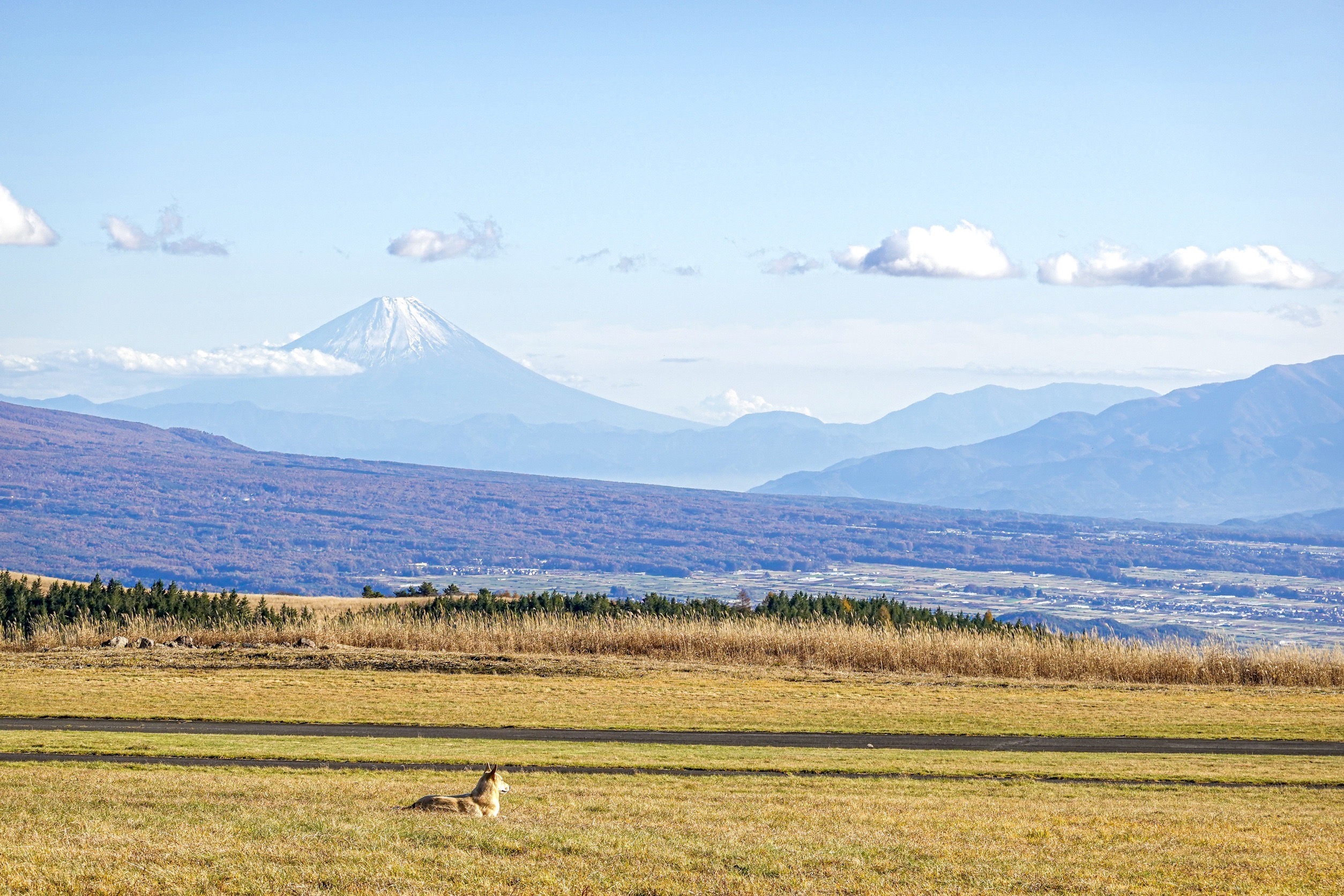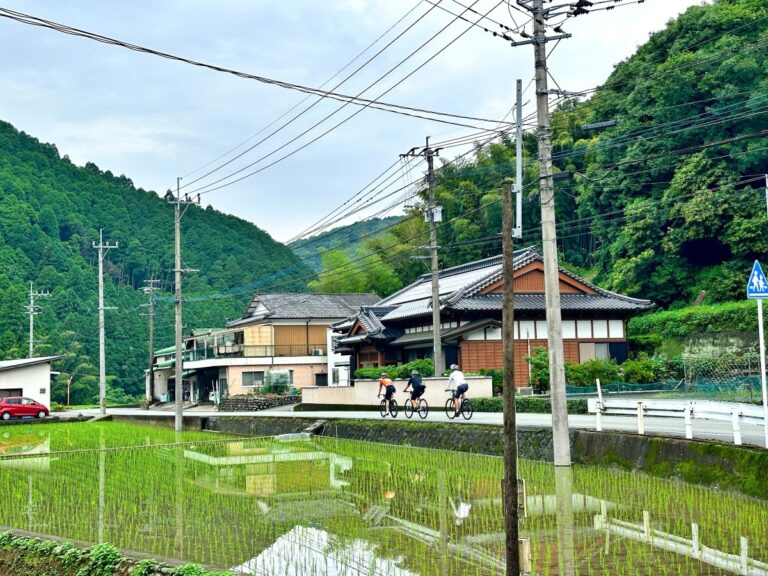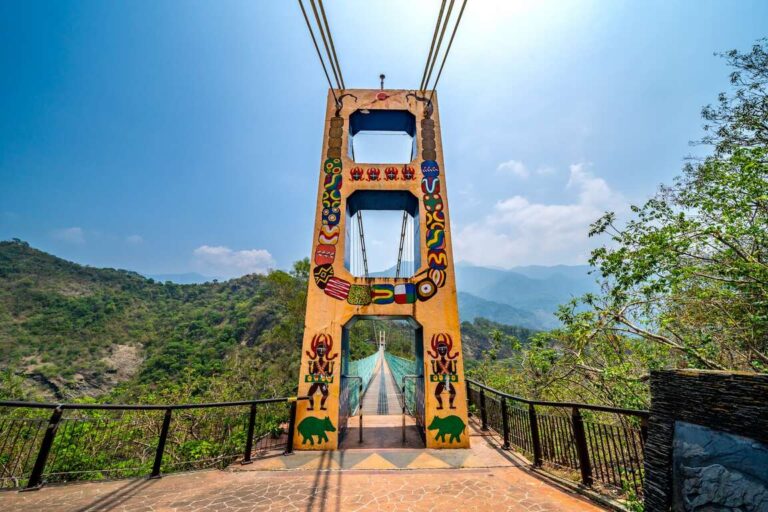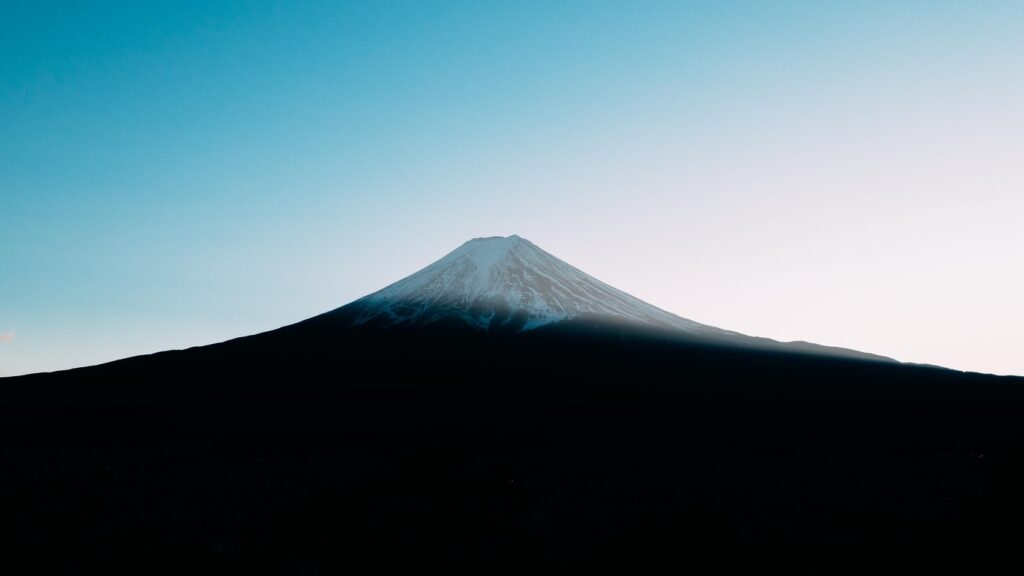
▲The origin of the Name “Mount Fuji(富士山)”
In Japanese, the word for a long and steep slope is pronounced “fu.ji,” which is one theory for the origin of the name. Another theory is that it comes from the language of the indigenous Ainu people, meaning “fire source.” Mount Fuji is the highest peak in Japan, standing at approximately 3,776 meters. It is an active volcano, but has not erupted since the years 1707 to 1708.
▲About “合目(Gome)”
Mount Fuji is divided into sections called “stations” or “gome,” with the path to the summit split into 10 stations. For example, on one of Mount Fuji’s climbing routes, the “Fuji-Subaru Line,” which is also the route for the Mt. Fuji Hill Climb race, the “fifth station” (5-gome) is located at the highest point accessible by road. This station is considered the boundary between the human world and the heavenly realm. Beyond this point, the ascent to the summit must be made on foot.
The term “合(go)” refers to a square container used in Japan for measuring rice, while “目(me)” indicates order. One theory suggests that the shape of Mount Fuji resembles a measure of rice (approximately 10-gome), and thus this visual impression is used to mark the journey up the mountain.
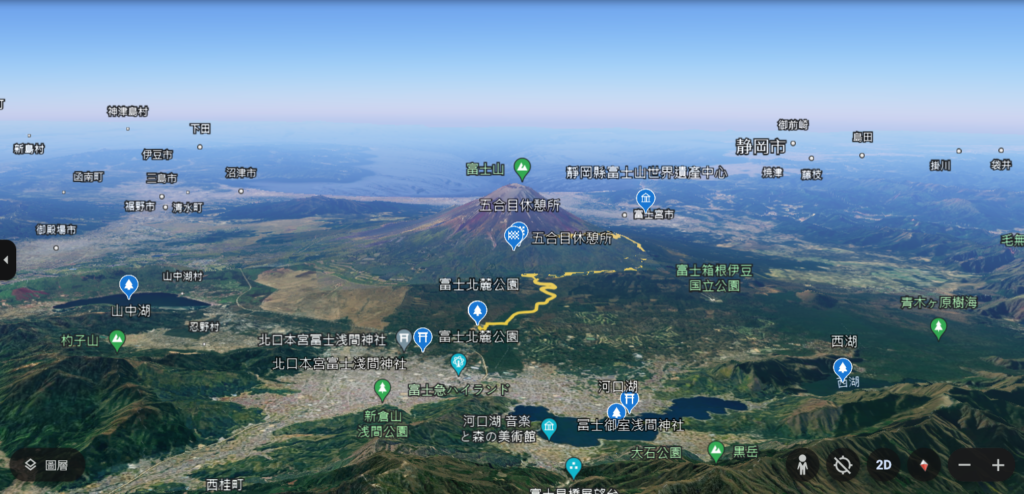
▲Mt. Fuji Hill Climb Sprint Award
The Mt. Fuji Hill Climb race has introduced a sprint award between the 19th and 20th kilometers of the course, presented to the fastest male and female cyclists in this segment. (Check out this segment on Strava)
▲Top 3 Men’s Finishes of the Mt. Fuji Hill Climb race Over the Years
| Year | Name(Team) | Time | Statitics’ Link |
|---|---|---|---|
| 2021 | Takato Ikeda (Team ZWC) | 56min:21sec | STRAVA |
| 2022 | Akira Manabe(EMU SPEED CLUB) | 57min:7sec | STRAVA |
| 2018 | Yuji Tanaka(グランペール) | 57min:10sec |
It is worth noting that the top two Japanese cyclists belonged to virtual club teams on Zwift at the same period: Zwift Warriors Cycling and EMU SPEED CLUB. Both cyclists mentioned that most of their training was done on Zwift, using virtual races to increase their stamina and intensity. The first place, Takato Ikeda, who is 168 cm tall and weighs 52 kg, has an FTP of 310 watts, resulting in a power-to-weight ratio of nearly 6W/Kg (as of a report from February 2022).
▲Top 3 Women’s Finishes of the Mt. Fuji Hill Climb race Over the Years
| Year | Name(Team) | Time | Statitics’ Link |
|---|---|---|---|
| 2023 | Yurina Kinoshita | 66min:44sec | STRAVA |
| 2013 | Hiromi Kaneko | 67min:46sec | |
| 2021 | Yao Feng Cheng (Shino) | 69min:16sec |
The race awards platinum, gold, silver, and bronze colored rings(resembling the column spacer of bicycle’s head part) based on completion times, regardless of gender. As a result, no female cyclist has yet achieved the gold band. In 2023, Yurina Kinoshita, who set a new women’s course record, shared her post-race comments on X (Twitter), “She did her best but did not reach the gold band level. She acknowledged that her ability wasn’t enough and that there was significant room for improvement. She vowed to work hard over the next 365 days.” She will be competing again this year, and you can follow her progress on her social media.>>
Instagram
X(Twitter)
In addition, the third place holder in the historical records, Cheng Yaofeng, also known by the name “Xiao,” is a highly regarded cyclist. Recently (as of now), she completed the 2300-kilometer Japan Transverse Bicycle Challenge in an astonishing time of 6 days, 4 hours, and 48 minutes.
Xiao:
X:https://x.com/shino_138
▲Mount Fuji as a UN World Cultural Heritage Site
In the 37th session of the World Heritage Committee in 2013, Mount Fuji was designated as a World Cultural Heritage site, becoming Japan’s 20th cultural heritage site (as of 2021, Japan also has five natural heritage sites). Why is a natural landscape marked as a “cultural” heritage? This is because this repeatedly erupting active volcano has been revered by residents since ancient times, giving rise to stories related to deities and beliefs. Additionally, as the highest peak in Japan, its majestic natural landscape has inspired countless artists, especially in the art genre of Ukiyo-e, which has significantly influenced Western artists.
Thus, Mount Fuji was listed as a World Cultural Heritage site under the criteria of “Sacred Place and Source of Artistic Inspiration.” This designation does not only refer to Mount Fuji itself but also encompasses its surrounding cultural, religious, and natural landscapes, including shrines, hiking trails, lakes, and coastlines, comprising a total of 25 locations.
*Each year, 3% of the Mt. Fuji Hill Climb race registration fees from the race are donated to the maintenance of this World Heritage site.
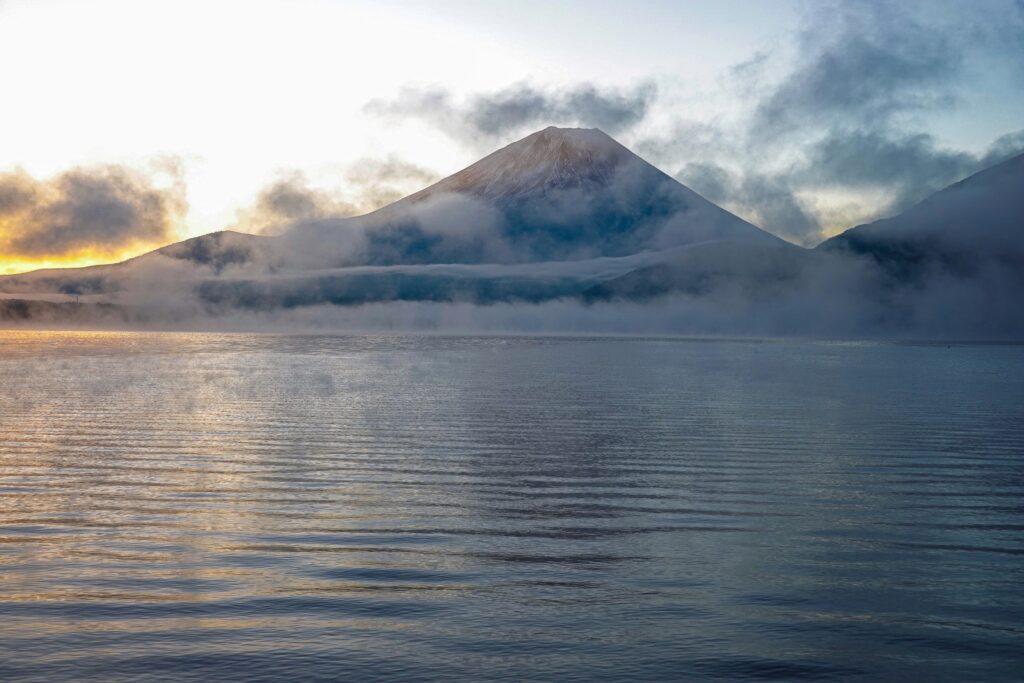
| Theme | Locations |
|---|---|
| Hiking Trails – Paths of spiritual cultivation | Fujinomiya Trail / Gotemba Trail / Subashiri Trail/ Yoshida Trail |
| Origins of Religious – Shrines and Oshi house (Lodging House) | Fujisan Hongu Sengen Taisha / Yamamiya Sengen Shrine / Murayama Sengen Shrine / Suyama Sengen Shrine / Subashiri Sengen Shrine / Kawaguchi Asama Sengen Shrine / Fuji Omuro Sengen Shrine / Oshi house (Lodging House):Former Togawa House & Osano Family House / Faith-Related Sites on Mount Fuji’s Summit |
| Pilgrimage and Cultivation Grounds – Fuji Five Lakes | Lake Yamanaka / Lake Kawaguchi / Lake Sai / Lake Shoji / Lake Motosu |
| Pilgrimage and Cultivation Grounds – Natural Landscapes | Oshino Hakkai / Funatsu Lava Tree Molds / Yoshida Lava Tree Molds / Hitoana Fuji-ko Iseki / Shiraito no Taki waterfalls |
| Artistic Inspiration – Scenic Views | Mihonomatsubara pine tree grove |
We have also specially selected a few of the 25 locations that are near the starting point of the Mt. Fuji Hill Climb race. If you have a chance to visit these spots, please take photos and send them back to us to enrich our content!
View these locations on Google Maps
Fuji Omuro Sengen Shrine
Location:https://maps.app.goo.gl/AS7FS3CHuBmGE19x5
Description:Located at the second station(gome) of Mount Fuji, it is the oldest shrine on the mountain. During the Sengoku period, many samurai, including the Takeda, Oyamada, and Tokugawa clans, were devotees of this shrine. To this day, many ancient documents are still preserved here.
Lake Kawaguchi
Location:https://maps.app.goo.gl/AS7FS3CHuBmGE19x5
Description:Lake Kawaguchi has the longest shoreline among the Fuji Five Lakes and the lowest elevation of all the lakes. It has no natural outflow (the river originates from Lake Kawaguchi itself). In the middle of the lake, there is a small island called “Unoshima(鵜の島),” which is dedicated to Benzaiten(弁財天, Goddess of entertainment and economic fortune). Artifacts from the Jomon to Yayoi periods, such as pottery, have been unearthed on the island. On the lakeshore, “Ubuyagasaki(産屋ヶ崎)” is home to many monuments with haiku poems from ancient times.
Lake Sai
Location:https://maps.app.goo.gl/AS7FS3CHuBmGE19x5
Description:Located in the center of the Fuji Five Lakes and surrounded by mountains and the Aokigahara Sea of Trees, Lake Sai boasts light blue waters. In ancient times, it was called “Saikai(West Sea).” The lake is fed by rainwater from Mount Fuji, which seeps underground and resurfaces at the lake bottom.
Lake Yamanaka
Location:https://maps.app.goo.gl/AS7FS3CHuBmGE19x5
Description:Lake Yamanaka is a freshwater lake on the Yamanashi Prefecture side. It is the largest, shallowest, highest, and closest lake to Mount Fuji among the Fuji Five Lakes.
Kitaguchi Hongu Fuji Sengen Shrine
Location:https://maps.app.goo.gl/AS7FS3CHuBmGE19x5
Description:This shrine, located closest to the Fuji Hokuroku Park Stadium, which is the starting point of the Mt. Fuji Hill Climb race, is dedicated to Konohanasakuya-hime (木花開耶姫命, the goddess of Mount Fuji and cherry blossoms). The shrine’s primary purpose is to protect climbers from volcanic threats and to pray for a safe journey up the mountain. During the Mount Fuji Opening Festival held every summer, the shrine celebrates the opening of the climbing season. Many people come here to perform ritual purification and prayers before their ascent. Cyclists can also visit this shrine to pray for safety before the Mt. Fuji Hill Climb race begins.
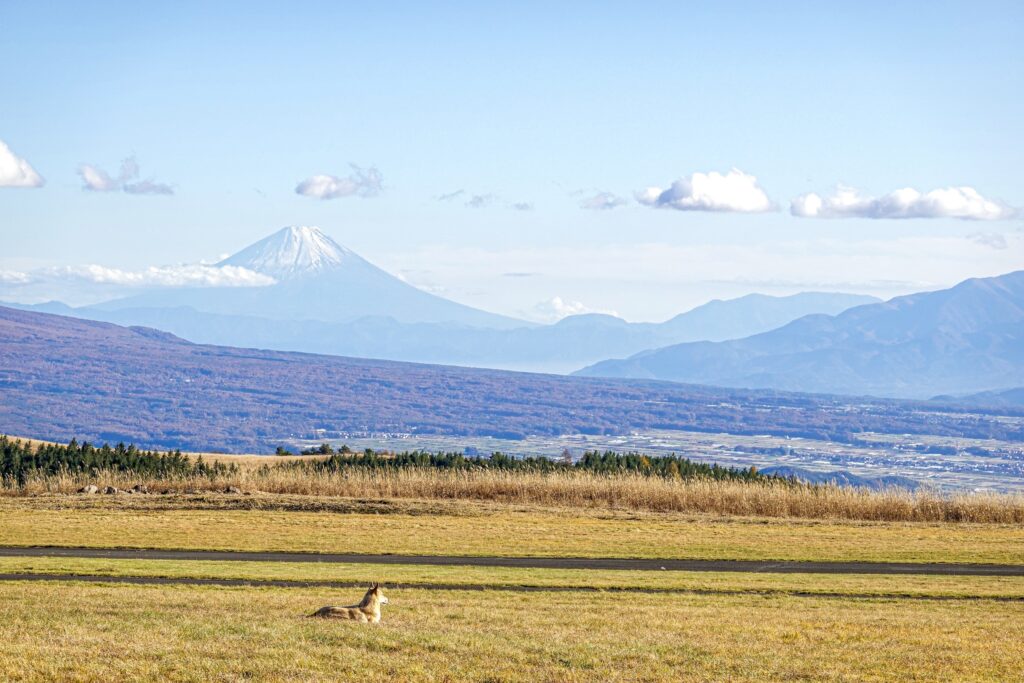
▲Mount Fuji World Heritage Center
Location:https://maps.app.goo.gl/tXxbigxErM1SP1sR7
Transportation:8 minutes from JR Minobu Line, Fujinomiya Station
Description:Opened in December 2017 in Fujinomiya City, the center is located next to Fujisan Hongu Sengen Taisha, and features a torii gate that allows for picturesque compositions with Mount Fuji to the north. It operates under four key principles: “Long-lasting Protection, Enjoyable Communication, Widespread Interaction, and Deep Study.” to introduce the history and culture of Mount Fuji.
The permanent exhibition areas include “The Mountain for Pilgrimage,” “The Fierce Mountain,” “The Sacred Mountain,” “The Beautiful Mountain,” “The Nurturing Mountain,” and “The Inherited Mountain.” If you want a comprehensive understanding of Mount Fuji, this center is definitely worth a visit.
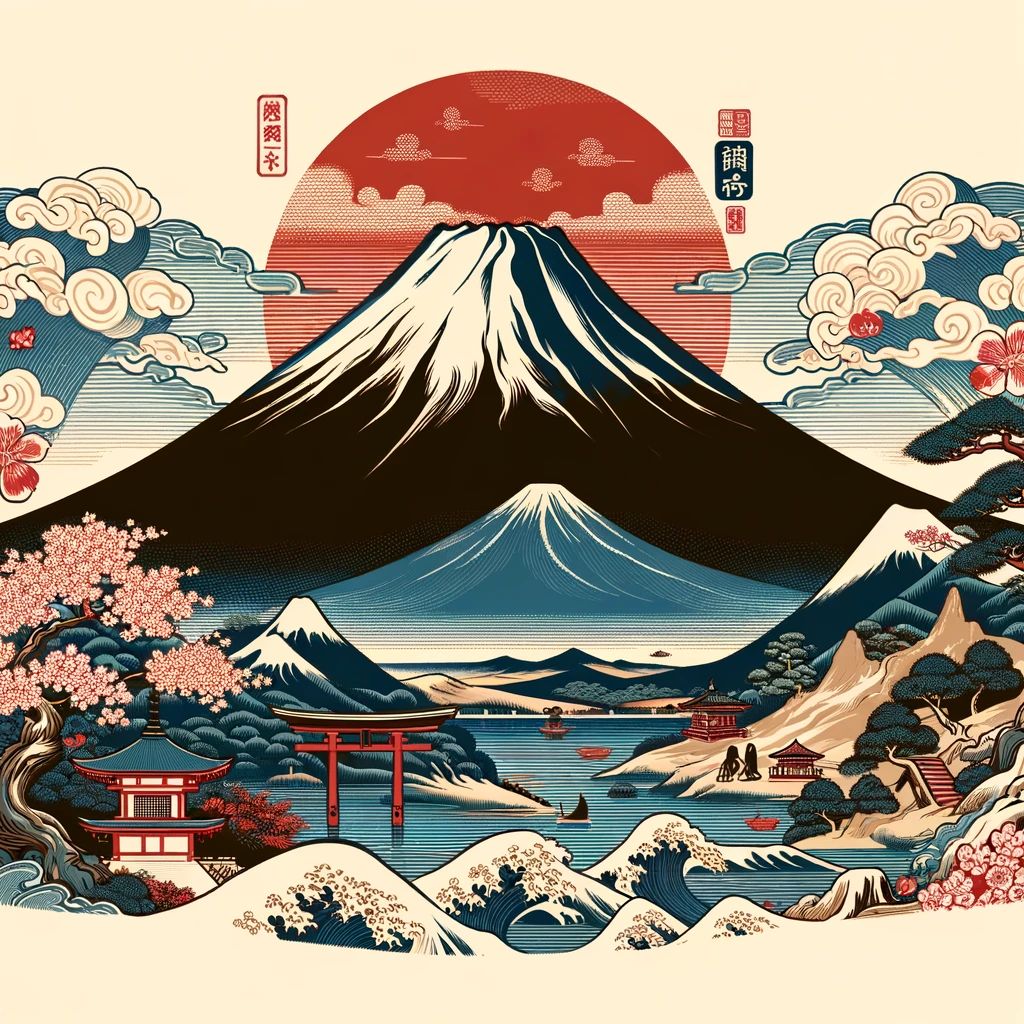
▲Katsushika Hokusai‘s “The Great Wave off Kanagawa”
You might have seen this image on various products, such as clothing, printed posters, and magazine covers. The distant mountain is Mount Fuji, depicted in “The Great Wave off Kanagawa” by Katsushika Hokusai, one of the most influential Ukiyo-e artists of the late Edo period in Japan. It is said to be viewed off the coast of Honmoku in Yokohama, Kanagawa. Besides this famous painting, Hokusai also created “Fine Wind, Clear Morning,” which portrays “Red Fuji” on a summer morning.
In addition to these two iconic works, Hokusai’s series “Thirty-Six Views of Mount Fuji” interprets Mount Fuji from multiple angles. These artworks have profoundly influenced not only Japanese art and tourism but also the global art world. When these paintings reached Europe in the 19th century, they inspired Impressionist masters such as Monet and Van Gogh.
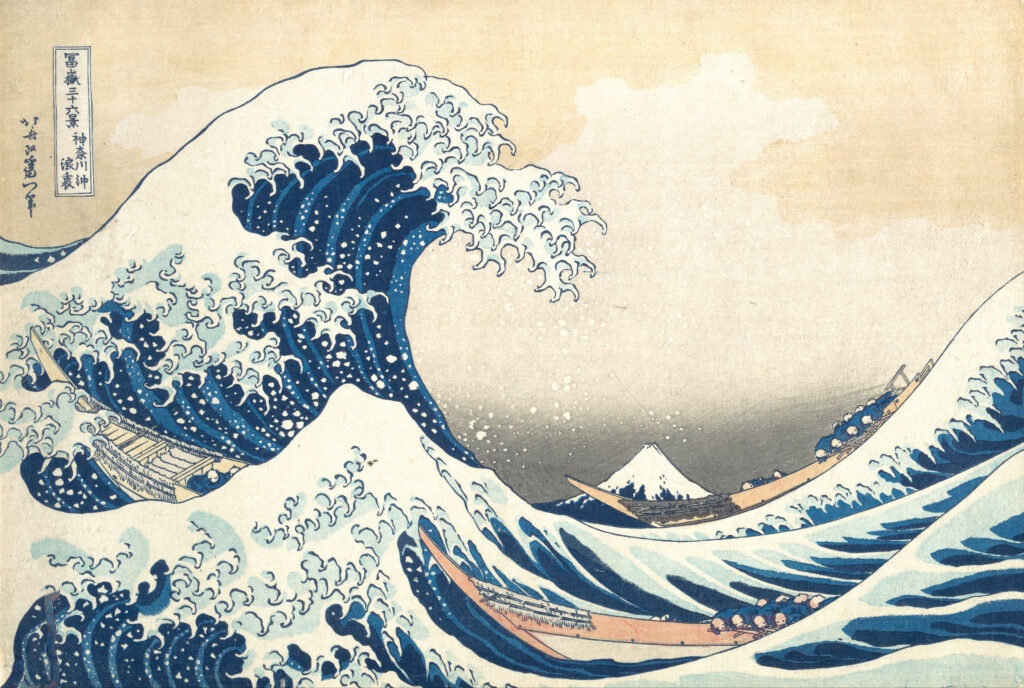
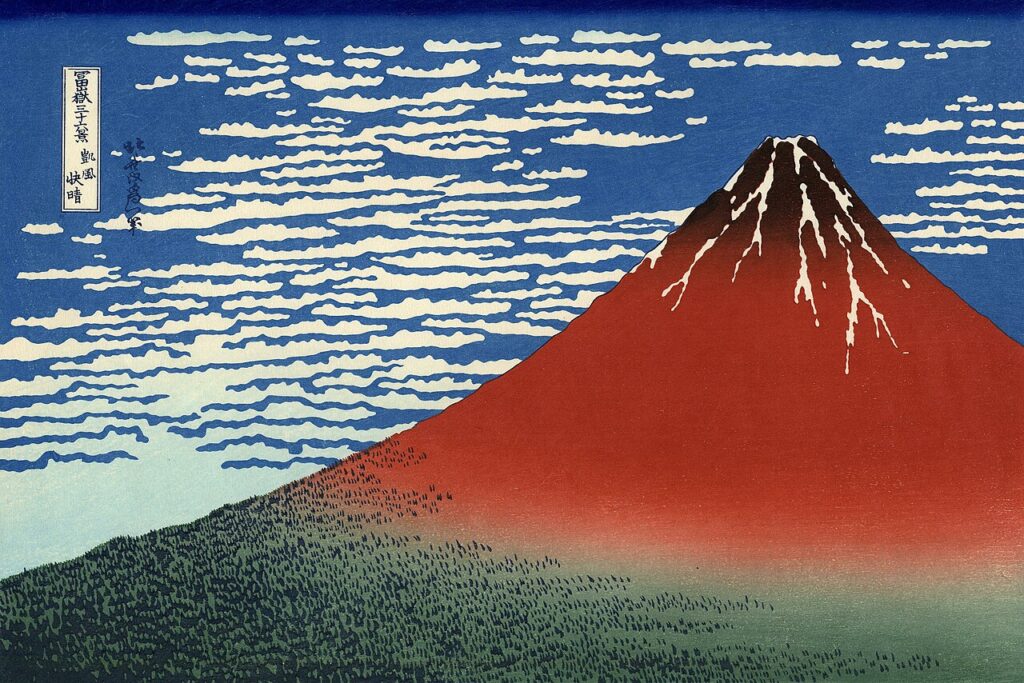
The painting “Reflection in Lake at Misaka in Kai Province,” is located at Fuji Hokuroku Park Stadium, Yamanashi, which is close to the starting point of the Mt. Fuji Hill Climb race. “Koshu” refers to the present-day Yamanashi Prefecture. The painting features Lake Kawaguchi in the foreground, reflecting an inverted Mount Fuji. The villages depicted at the foot of the mountain are Katsuyama and Nagahama, though the thatched-roof houses no longer exist. Cyclists participating in the race can visit this spot to take commemorative photos (don’t forget to include your bike in the shot).
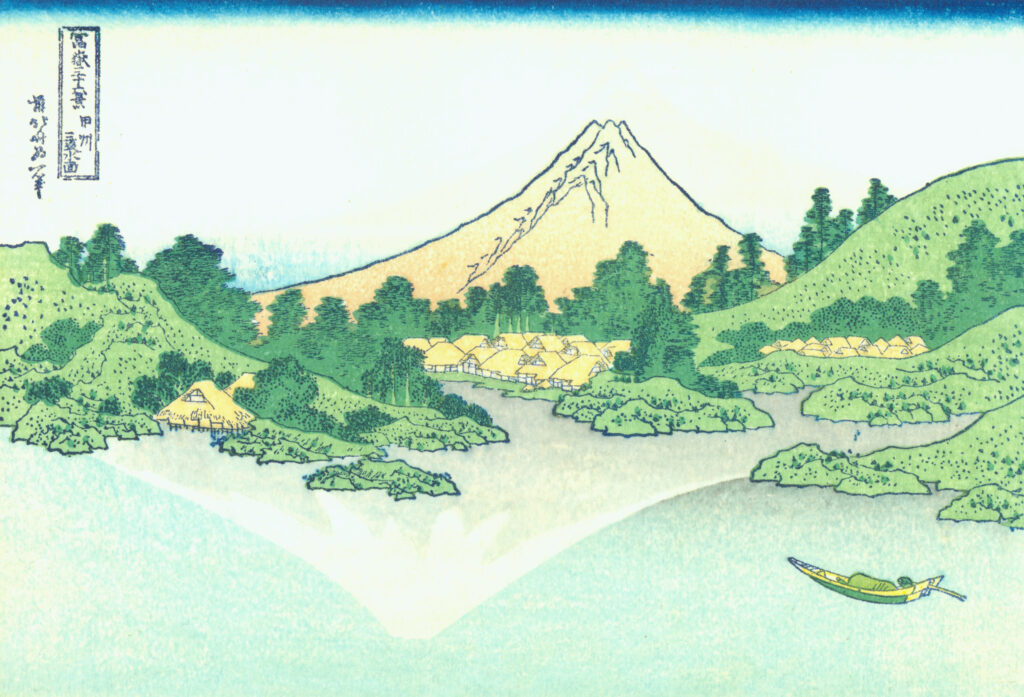
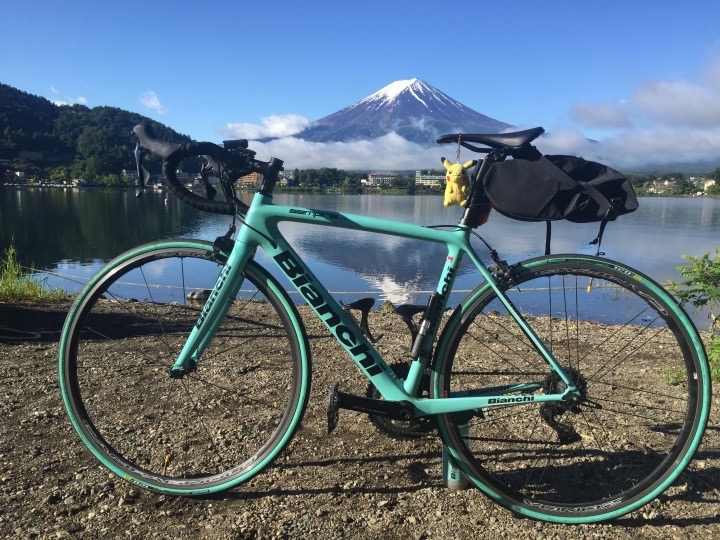
▲Related Links
Tailor your Mt. Fuji cycling trip with ensage
Mt. Fuji Hill Climb race’s official site
Download Mt. Fuji Hill Climb race GPX
